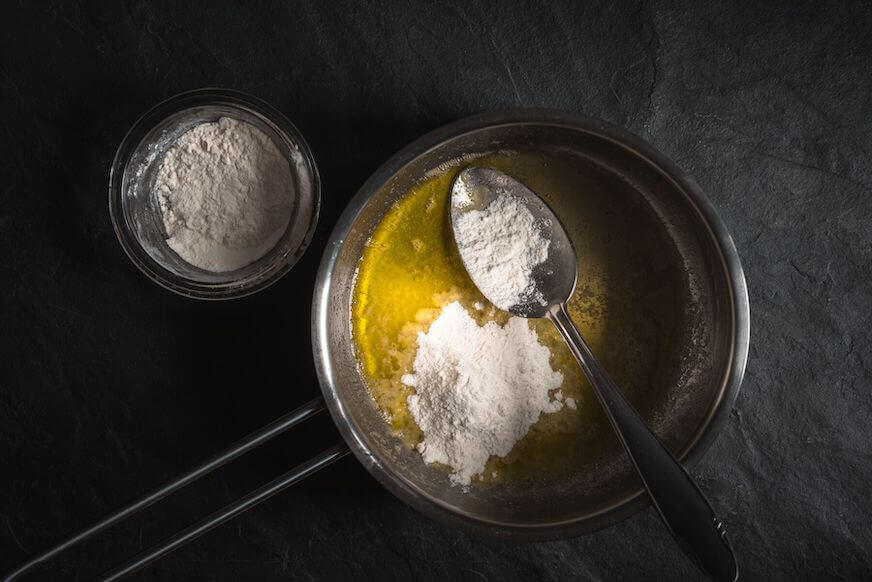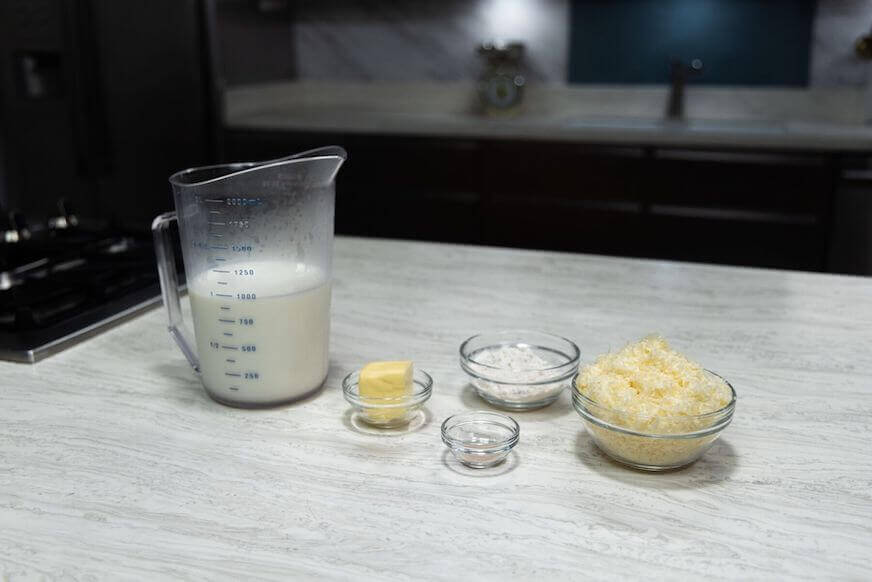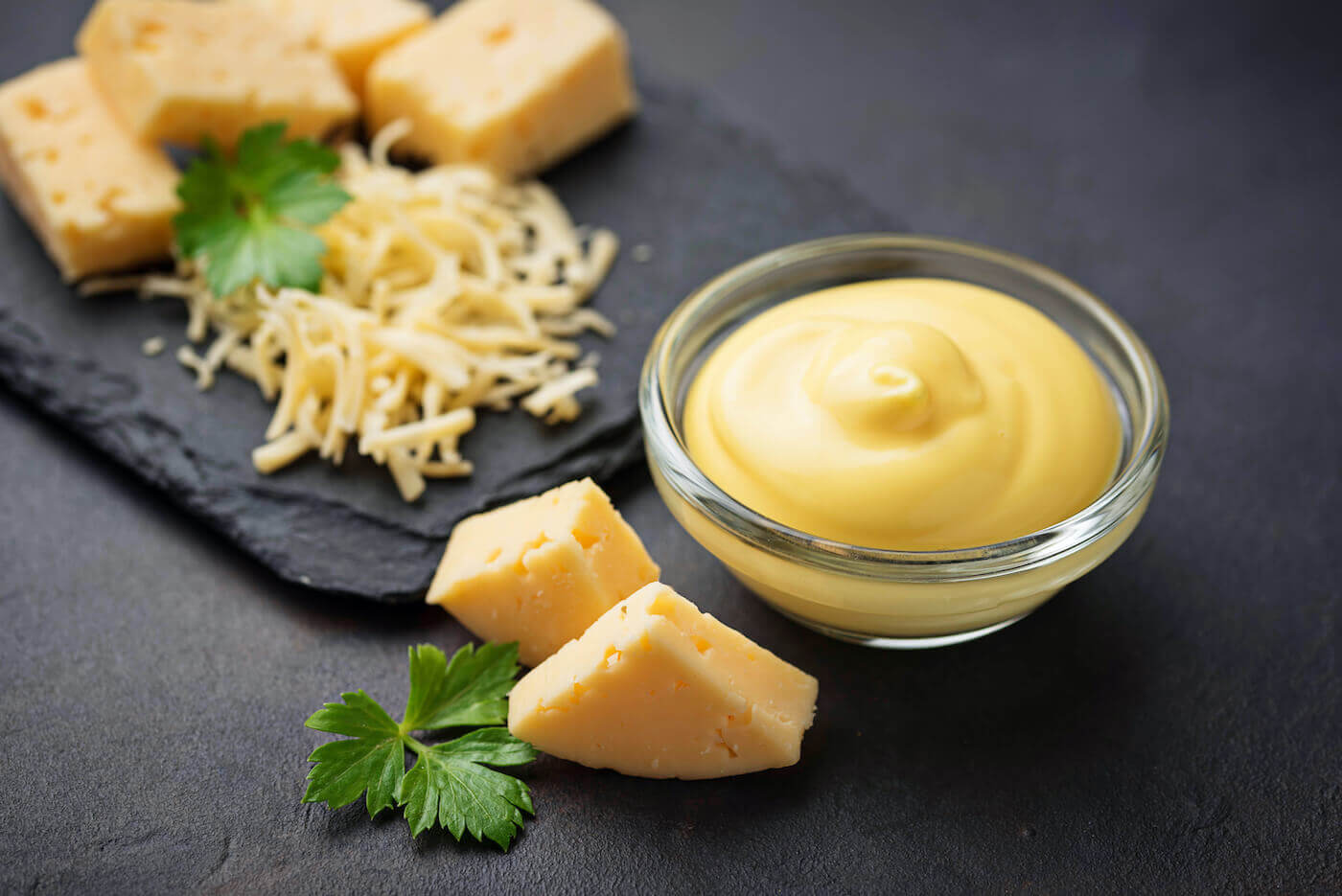How to Make Cheese Sauce

If there’s one food that truly seems like it can go with anything, it’s cheese sauce. From down-home to elegant, dunked in to drizzled, cheese sauce boasts a world of versatility.
It elevates breakfast burritos, can make vegetables more inviting for kids (and adults, who are we kidding?), is the focal point of macaroni and cheese, can make for a delicate sauce over veal cutlets, and, of course, is the entire point of fondue.
Once you’ve grasped the basic technique, you can add any variety of seasonings and ingredients to customize your cheese sauce. Now, let’s break down how to make a delicious cheese sauce!
First, a Definition. What is a Sauce?
It almost seems silly to provide a definition—a sauce is a sauce, right? But a sauce is distinct from other liquids or dressings, and understanding this distinction is the first step in making a sauce that’s truly great. A sauce is a liquid with the addition of a thickening agent and other flavors, such as herbs and spices. So a gravy is a sauce, but a vinaigrette is not.
A great sauce depends on developing a strong or complementary flavor profile and in achieving the correct consistency, which means using the right thickening agent. This could be flour, eggs, cornstarch, or a roux.
The five “mother sauces”—defined by Auguste Escoffer as Hollandaise, Béchamel, Velouté, Espagnole, and Sauce Tomat—are considered the basis for nearly every sauce used in modern cuisine.
You don’t have to be a professional chef to have an appreciation for sauces and French cuisine. Through online home gourmet cooking classes you can explore sauces, classic French foods like baguettes, and so much more.
Step 1: Start With a Roux
A cheese sauce involves more than simply melting cheese into a gooey state. Many great cheese sauces start with a roux.
A roux is made from equal parts fat and flour. The fat—usually clarified butter in French cuisine—is heated until it’s frothy. Then, flour is stirred in slowly to create a thick paste.
As the roux cooks, it will darken in color. Some sauces call for a very light roux, while others require a golden or even brown roux.

A roux is just two ingredients, but must be cooked carefully so it doesn’t burn.
Step 2: Move on to a Béchamel
A béchamel sauce is a white sauce made by combining a roux and whole milk. It forms the base for many other creamy, decadent secondary sauces.
Once you’ve made the roux, add milk slowly and whisk to prevent lumps. Season with salt and pepper. You can add more seasonings and ingredients like nutmeg or diced or grated onion, depending on the desired final product.
Step 3: Add Cheese or Cheeses of Your Choice
When the béchamel is ready, turn the heat off and add grated cheese of your choice a little at a time, whisking until melted. This is also called a mornay, which is just a cheesy version of béchamel (and sounds fancier).
Be sure to grate the cheese yourself, as pre-grated or pre-shredded cheese in a bag is coated (usually with cellulose) to prevent it from sticking together in the packaging; that coating also prevents it from melting well, or evenly.
As for cheeses that DO melt well, softer cheeses with their higher moisture content will generally melt more easily, as will cheeses that are higher in fat. A brie will melt easily, while an aged hard cheddar could wind up oily. A gouda will usually melt easily, with younger gouda melting easier than aged because of its higher moisture content, and gruyere is considered one of the best cheeses for sauces and fondues.
However, you can coax most any cheese to melt into your béchamel with the right scientific knowledge. Some cheeses that don’t melt well on their own will melt well into the béchamel, while others might need the help of something acidic, like wine.
Putting it all Together: How to Make Cheese Sauce, Steps and Ingredients
You will need:
- 2 tbsp butter
- 2 tbsp all purpose flour
- 1 cup milk (room temperature or warm)
- Salt and pepper to taste
- 1 cup shredded sharp cheddar cheese
- ½ cup finely grated parmesan cheese
To combine, follow these steps:
- Melt the butter in a saucepan and over medium heat.
- Sprinkle flour into the melted butter and whisk constantly, scraping the bottom of the pan to prevent burning. Cook until it forms a paste, or a white roux, the butter is fragrant, and you can’t smell the flour anymore. The mixture should be a light golden color.
- Slowly add milk to the roux, whisking constantly until there are no lumps. Simmer until sauce is close to its desired consistency; the sauce will continue to thicken as it cools. Remove from heat.
- Optional: Strain sauce through a chinois or mesh strainer to remove any clumps.
- Season to taste. If the sauce is too thick, add warmed milk and whisk. If too thin, simmer longer.
- Add cheese, about a quarter-cup at a time, whisking until melted. You can return to low heat if needed, but be careful only to melt the cheese.
If your cheese sauce sits out too long and starts to solidify, or if you have any leftover cheese sauce you want to use another day, you can reheat it over low heat, stirring regularly to prevent it from burning. You might add some milk to help the process. You can also reheat cheese sauce at a low temperature in a microwave for small bursts of time, about 15 seconds, and stir in between. The oven is a third option.

A cheese sauce comes together with just a handful of ingredients.
Uses for Cheese Sauce
Cheese sauce can impress on its own, unadorned and unaccompanied. Think fondue or dipping sauce. Either of those can be as simple or as complex as you desire, with different cheeses and flavorings changing the experience entirely.
A great cheese sauce is also the starting point to a knockout macaroni and cheese and, similarly, a cheesy potatoes dish. You might also use cheese sauce in an alfredo dish; although an alfredo doesn’t typically start with a roux—which is Step 1 for outstanding cheese sauce—it can. Cheese sauce can also be used in a number of soups, from broccoli cheddar soup to cheeseburger soup or cheddar cheese soup.
Then there are times when cheese sauce is a finishing touch or a delicate complement, like when it’s drizzled over meat, fish, and vegetables. You might make a chicken cordon bleu with a cheese sauce, a cheese and wild mushroom risotto, or a parmesan cheese sauce drizzled over roasted asparagus.
Explore Sauces and More
These three techniques, for roux, béchamel, and a basic cheese sauce, can provide the foundation to expand into more complex sauces and recipes.
Find out more with home gourmet online cooking classes, like Sauces 101 or Classic Sauces.
Or, if you want to pursue a culinary education, consider a degree or diploma in culinary or pastry arts. Escoffier offers both on-campus and online options, making it easier for you to find a way to fit school into your life.
Want to know more about sauces? Try these articles next:


